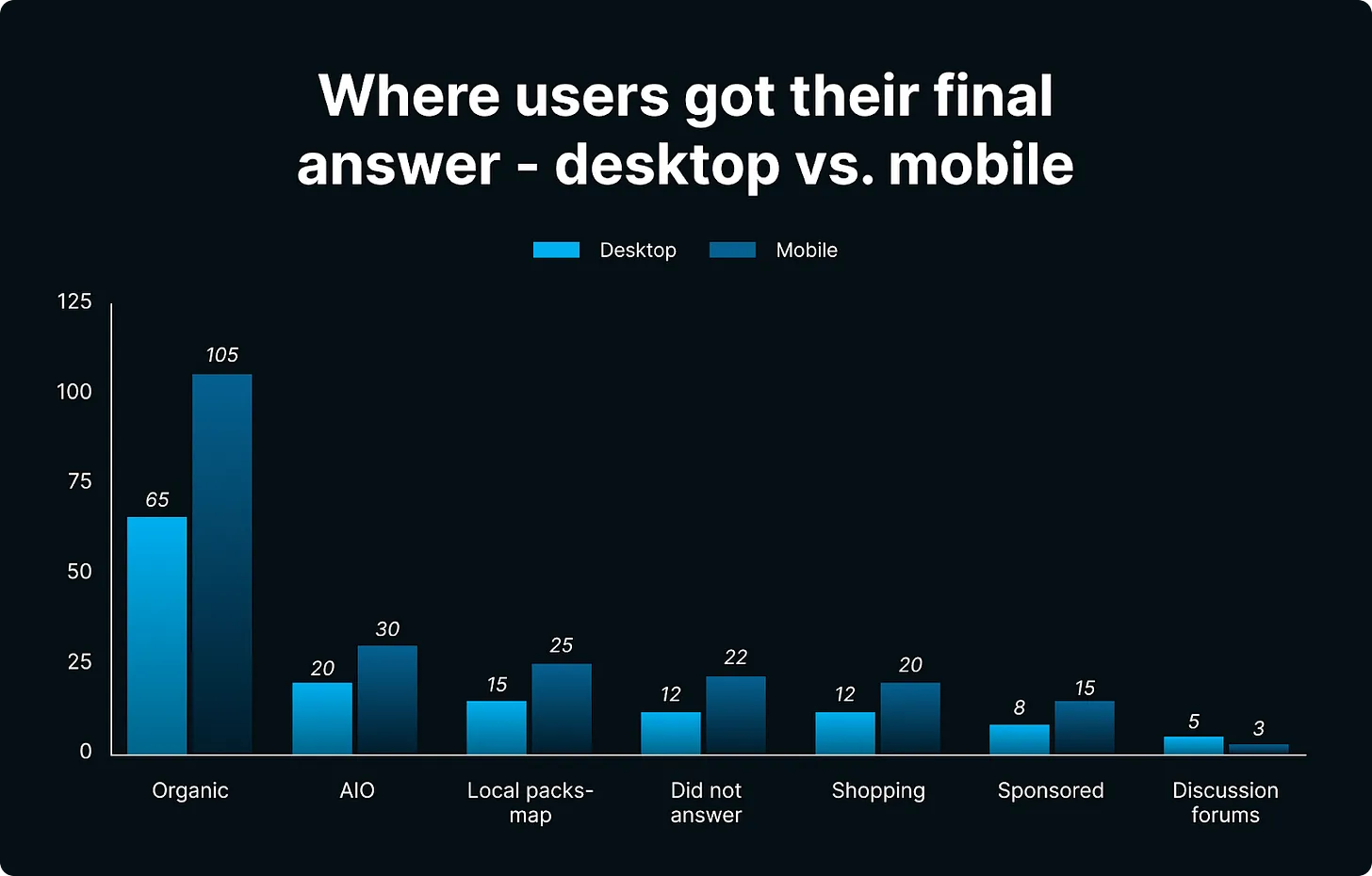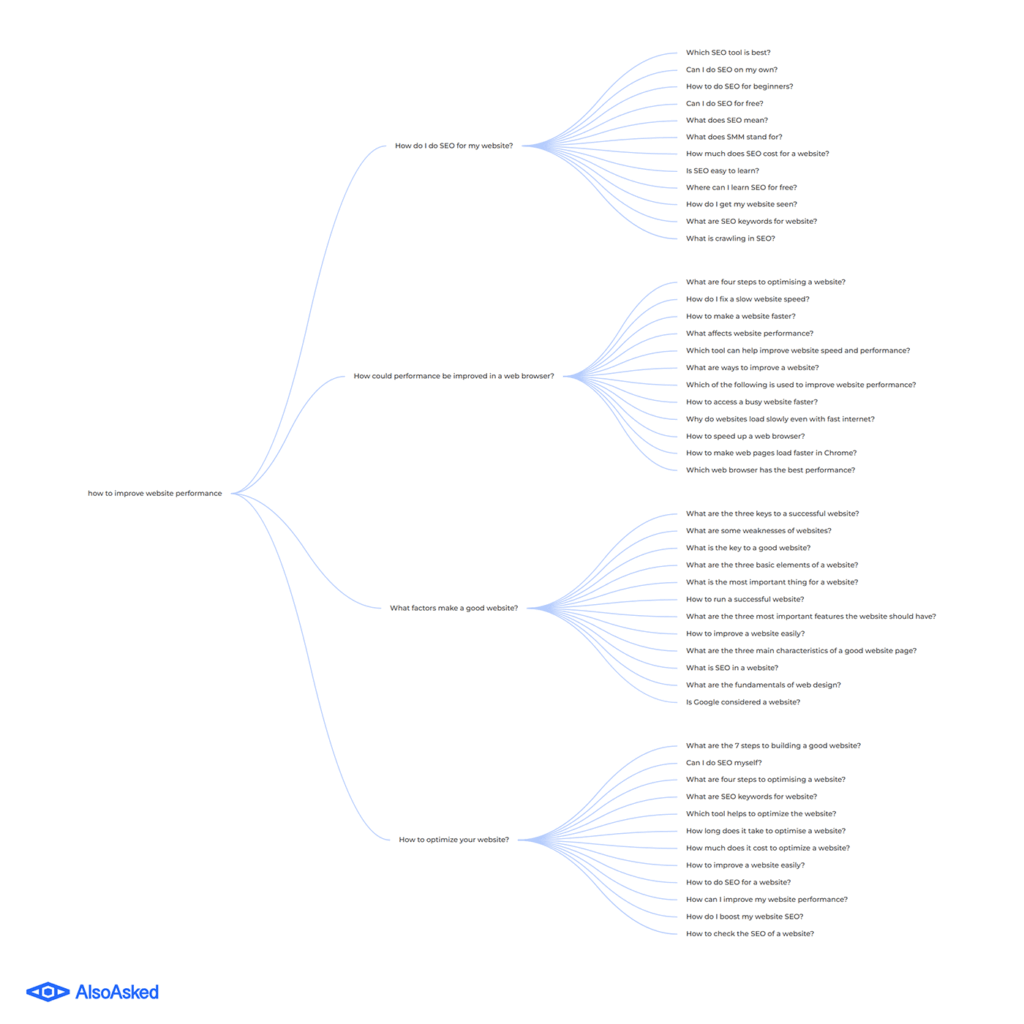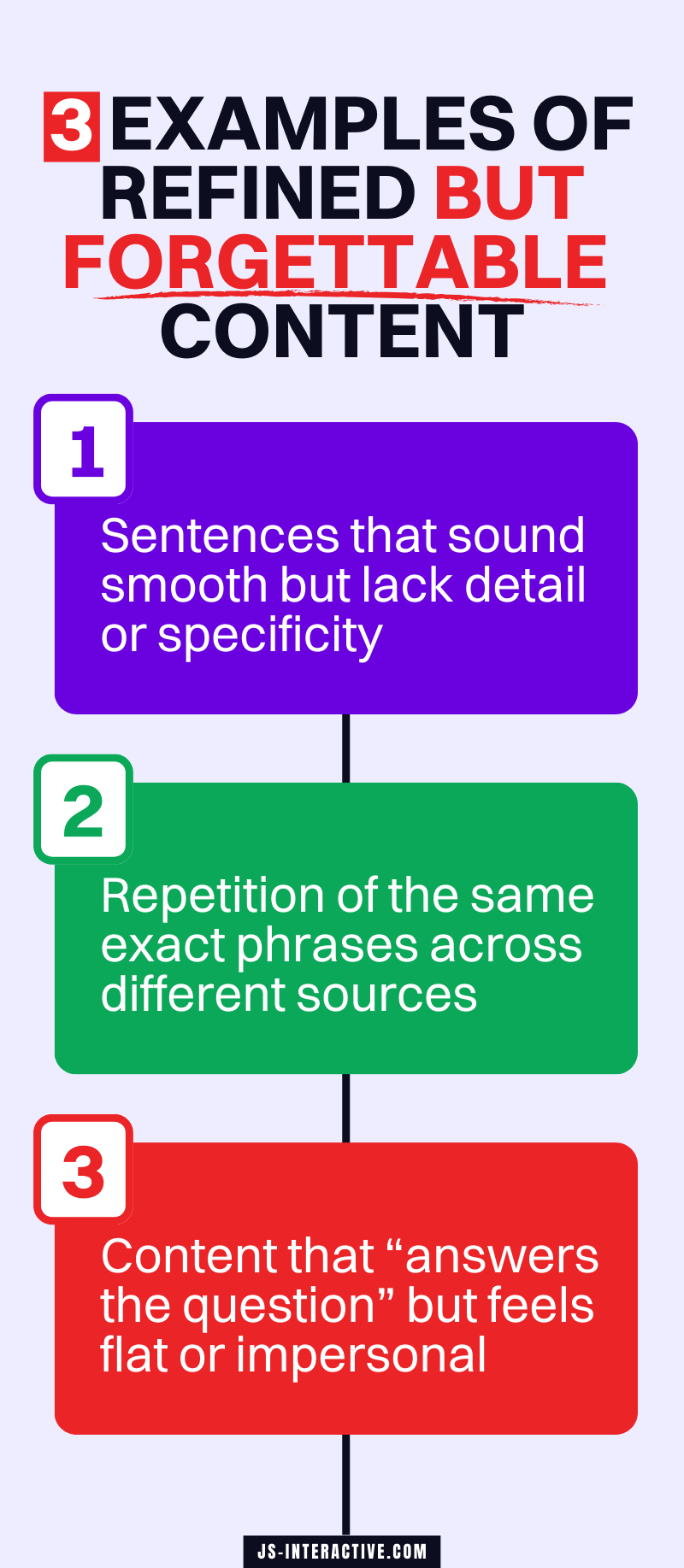AI Search Optimization: 6 Essential Strategies for Better Results

You type a question into Google. Before your eyes even land on the familiar blue links, an AI snippet displays at the top of the page with a tidy little summary.
The response was fast. Helpful, even. But not quite final.
You skim it, expand it, and then, like many of us, you keep scrolling.
This is how most people are using search today.
A recent study by Kevin Indig found that 88% of users expand AI Overviews, and 86% skim them from top to bottom. His report showed that the answers from AI snippets only satisfied roughly 20% of queries.
The rest of the users dive deeper into organic results, branded searches, or validation clicks on platforms like Reddit and YouTube.
AI tools are here to stay. More than half of U.S. adults now use large language models, and ChatGPT alone serves 700–800 million people weekly.
Having brand presence within AI answers is the new game. With brand presence, you can be recognized as trustworthy, giving users a reason to check out your brand.
So, how does a business gain visibility when AI handles more of the users’ search journey? If clicks are no longer the primary goal, marketers need to shift focus to other areas.
Traditional SEO Still Matters with AI Search
So let’s clear the air about one thing. Yes. Traditional SEO still matters. AI Overviews and large language models may look different on the surface, but they still lean on the same signals search has always rewarded:
- Well-structured content
- Clean site architecture
- Authority built over time
Visibility now depends less on a single keyword and more on whether your content is trustworthy, hyper-relevant, and easily accessible.
That’s good news for businesses already investing in SEO fundamentals.
Schema, internal linking, fast load times, and functional page structures aren’t just best practices. They are what feed the answers you see in AI summaries.
With over 5.7 billion monthly visits to ChatGPT, AI is mainstream, but it still relies on the web content you publish.
If your foundation is weak, no amount of AI tweaking will help. If it’s strong, you’re already ahead.
6 Key Considerations for Optimizing in AI Search
As AI reshapes the search experience, where should marketers put their attention? These six tips will help your business stay visible:
1. Focus Beyond Top-of-Funnel
Top-of-funnel queries, the quick informational searches, are often fully answered inside an AI Overview. That means there is little incentive for a user to click through.
The real opportunity shows up further down the funnel.
When the question has higher stakes, people want more than a summary. Indig’s test run found that users who are researching finance, mortgages, and health were far more likely to move past an AI Overview into traditional results for further research.

Kevin Indig: Growth Memo
The chart shows that most users still rely on organic results to find their final answer, especially on mobile devices, where screen space is limited and scrolling is a natural process.
AI Overviews play a role, but they are far from the end of the search journey.
This is where mid- and bottom-funnel content becomes essential; content such as:
- Case Studies
- Product Comparisons
- Pricing Breakdowns
- Detailed guides
This content is intended for users who are already considering a decision. They are not just searching for information; they are also seeking to gain a deeper understanding of the topic. They are searching for confidence.
When you align your content with those moments, you are not only visible in search but also more relevant to users. You are part of the decision.
2. Cover the Context with Query Fan-Out
Google no longer treats a single query as a single question.
With Query Fan-Out, the system breaks down a single search into multiple sub-queries or sub-topics and then synthesizes the answers into a unified response.
A request like “how to improve website performance” might fan out into site speed, user experience, analytics, and optimization tools. The AI then pulls information from across multiple sub-queries before generating the final summary.
For brands, this means content can no longer live in isolation. One narrow post on page speed will not be enough. Instead, you need to build content clusters with topical authority that cover the broader context of what users are searching for.
So when a user asks “how to improve website performance,” supporting content could explore:
- Best tools to measure website performance
- Image optimization techniques
- Optimizing your website for Core Web Vitals (LCP, FID, CLS, INP)
- Browser caching and preloading strategies
- Navigation best practices
- Choosing the right hosting provider (shared vs. VPS vs. cloud)
A content gap analysis can identify areas where your site lacks subtopics and help prioritize which content to build or update first.
Tools like AlsoAsked can surface related questions, giving a clearer understanding of the sub-topics users might search for.
These subtopics help your content align with how Google categorizes queries, and also anticipate the follow-up questions users naturally ask as they continue their research.

3. Build Brand Authority and Trust
Authority now outweighs intent. Users don’t just seek an answer that solves their question or problem. They take it a step further by asking themselves if they know and trust the brand behind it.
That matters even more as content noise rises.
Research shows that 18-24% of financial complaints, corporate press releases, and job postings now show signs of AI influence. To most readers, the result is writing that seems refined but remains forgettable.
- Sentences that sound smooth but lack detail or specificity
- Repetition of the same exact phrases across different sources
- Content that “answers the question” but feels flat or impersonal
When everything starts to sound the same, recognizable and trusted brands are the ones that stand out. Building that kind of authority not only earns visibility in AI answers, it also drives branded searches and repeat recognition.

To build authority and trust, businesses need to focus on:
- Earning consistent mentions across credible sources
- Collecting positive reviews and highlighting third-party validation
- Showing up in community spaces where your audience already looks for answers
- Publishing content that demonstrates expertise and reliability on high-stakes topics
Authority compounds over time. The more often people see your name in AI Overviews, organic results, or trusted forums, the more likely they are to take the next step by researching your brand.
4. Contribute to Validation Channels
Even when AI Overviews provide a quick answer, many users still want confirmation from unbiased authority signals. Many users often validate what they see by checking Reddit threads, YouTube videos, or other community-driven platforms.
Younger audiences lean this way even more, often trusting peer discussions over polished web pages.
This makes validation channels an extension of your search presence. Being active where people fact-check AI results not only builds trust directly, but it also sends positive signals back into Google’s systems.
To strengthen your visibility across validation channels:
- Engage on Reddit by contributing helpful, non-promotional answers in relevant threads
- Build a YouTube presence with explainer videos, tutorials, or product walk-throughs
- Contribute to niche forums where your audience discusses solutions and tools
- Encourage authentic reviews and mentions that reinforce credibility
Users are more likely to believe what they read or watch from peers than from a faceless brand. Meeting them in these spaces gives your business the human validation AI alone cannot provide.
5. Refresh and Structure Your Content
AI Mode favors freshness. Large language models pull most heavily from the past two years of web content. This means stale pages are less likely to surface in an AI Overview, even if they once ranked well.
A regular content refresh cycle matters more than publishing a constant stream of new posts. Review your archives, prioritize updates to the last two years of material, and add further context where needed to make older articles relevant in today’s times.
Equally important is structure.
AI systems skim content much like users do. Straightforward navigation, logical headings, and structured data make it easier for both people and machines to extract the relevant details.
Here’s how to keep your content in shape:
- Audit older posts and update statistics, examples, and references
- Prioritize recent content by refreshing the last two years first
- Use clear headings and schema so content is easy to parse
- Design for scanning with short sections and obvious takeaways
The combination of recency and clarity makes your site a more reliable source. When AI pulls from the web, well-maintained content has a better chance of being chosen and trusted.
6. Redefine Success Metrics
Clicks have always been the easy number to point to, but they are becoming less meaningful.
AI Overviews answer many quick questions before a user ever visits a site. Organic sessions will decline, and treating that as failure misses the bigger picture.
The better measure of success is brand presence. Ask yourself:
How often does your brand appear in AI answers?
Are people searching for you by name after seeing you in an overview?
Are they converting once they land deeper in the funnel?
These signals tell you more about influence and trust than raw traffic ever will.
With ChatGPT handling 2.5–3 billion prompts daily, visibility inside AI-driven results matters as much as placement on the traditional results page.
The scoreboard is changing, and SEO teams need to adapt their reporting with it.
Build Brand Credibility in AI Search with JS Interactive
AI Overviews may handle quick answers, but they do not close the loop. The brands that win are the ones people recognize, trust, and associate with brand credibility.
SEO today is less about traffic and more about establishing brand authority wherever people search for answers.
Ready to strengthen your brand credibility in AI search?
Contact JS Interactive today to help you build a strategy that earns trust and drives results.